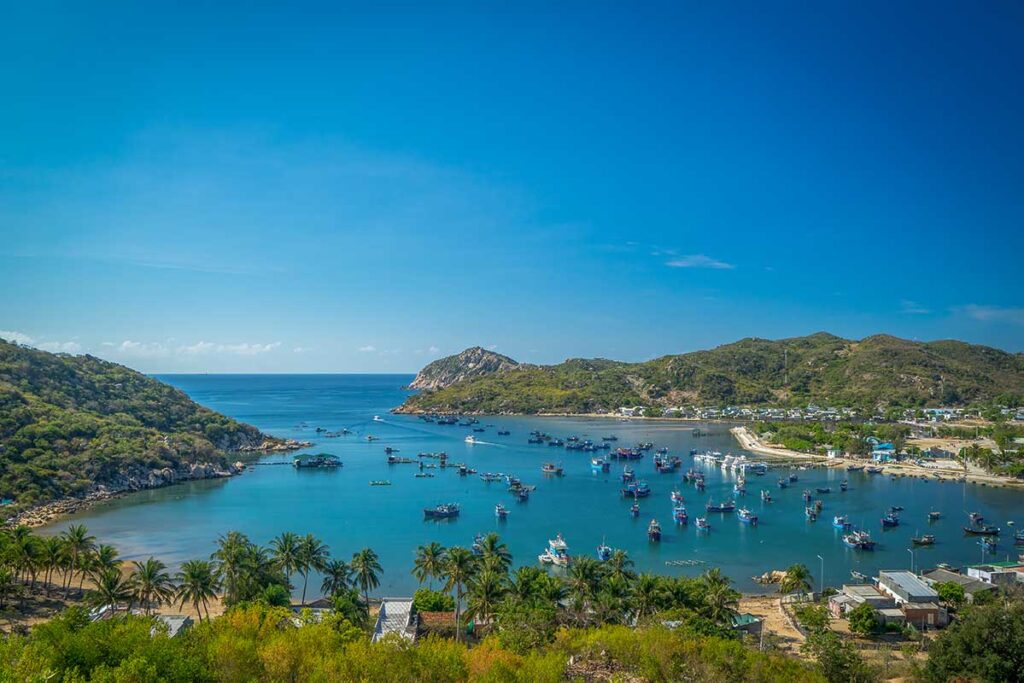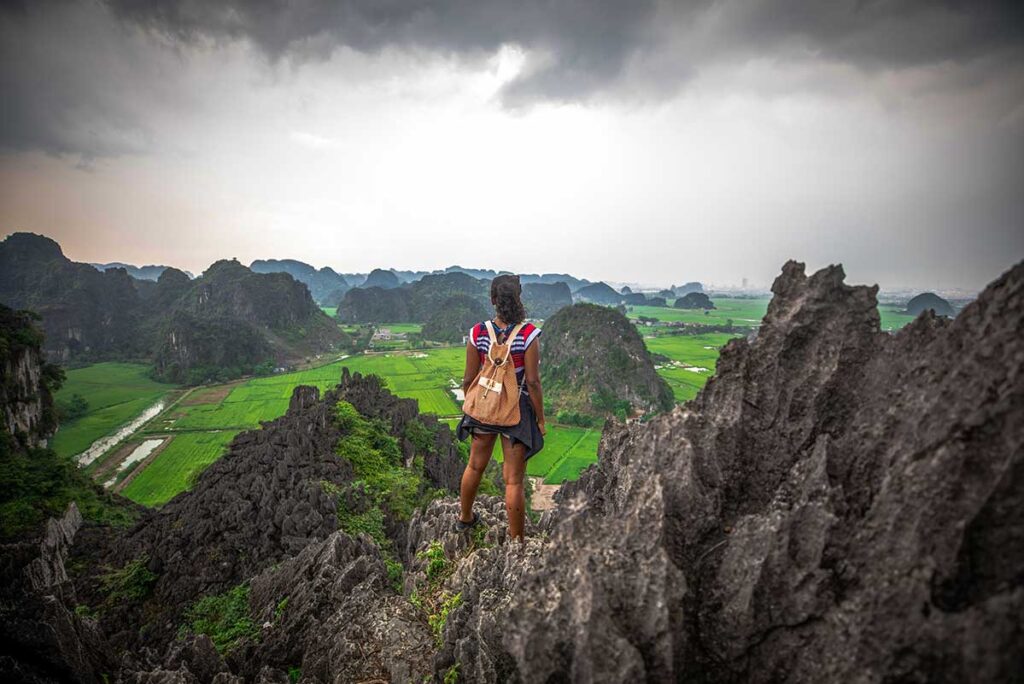What is Vinh Hy Bay?
Location, landscape & nature
Vinh Hy Bay is about 40 km northeast of Phan Rang–Thap Cham, tucked into the Nui Chua coastal strip along the DT702 road. The bay itself is small and sheltered, ringed by cliffs and rocky headlands.
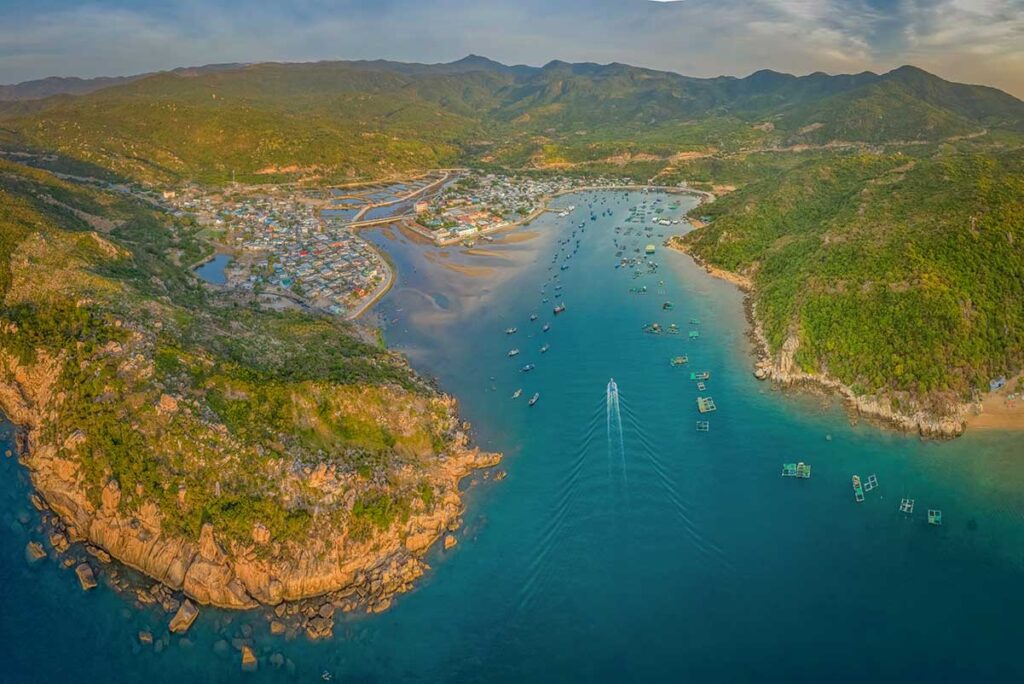
The surroundings are a mix of dry forest hills, vineyards, and rugged coastline dotted with pocket beaches and unusual rock formations. The water holds coral zones and a few secluded coves that can only be reached by boat, while Lo O Stream offers a cool freshwater stop nearby.
Local life & tourism character
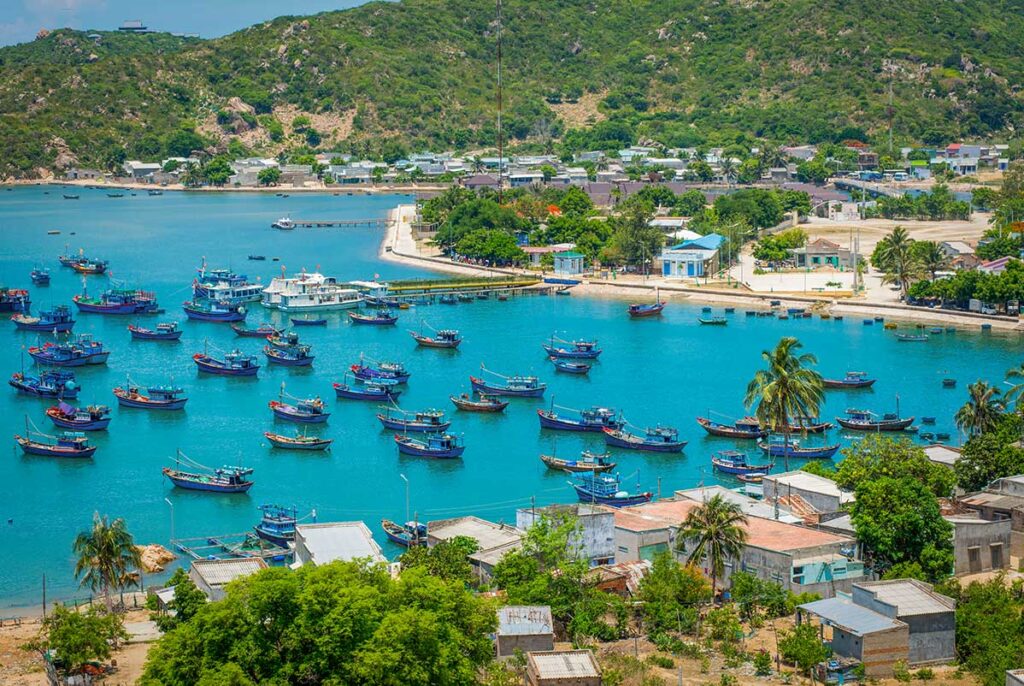
At its heart, Vinh Hy is a fishing village. You can watch boats come in each morning and stroll through the small market, while the bay itself is filled with floating fish farms and simple seafood rafts where visitors can stop for lunch.

Tourism is still fairly low-key and mostly domestic. English is limited, and while there are a few homestays and resorts, services remain basic compared to more developed coastal areas. Many visitors come for a day trip along the coastal road or stay outside town for the views. It’s not a place with polished beaches or nightlife, but a good stop if you want scenery, seafood, and a look at local life.
Things to Do & See in Vinh Hy Bay
There’s beauty and variety here, but many highlights require a boat, and services are simple. Foreign travelers should plan with realistic expectations: you’ll get rugged scenery and fresh seafood, but facilities are basic and English is limited.
1. Scenic coastal ride on DT702

The main approach to Vinh Hy Bay is along road DT702, often described as one of the most scenic coastal drives in Vietnam. The road winds between the dry hills of Nui Chua National Park on one side and the blue ocean on the other, with plenty of curves and viewpoints to stop for photos. It’s especially impressive when combined with the outlooks toward Binh Hung Island further north.
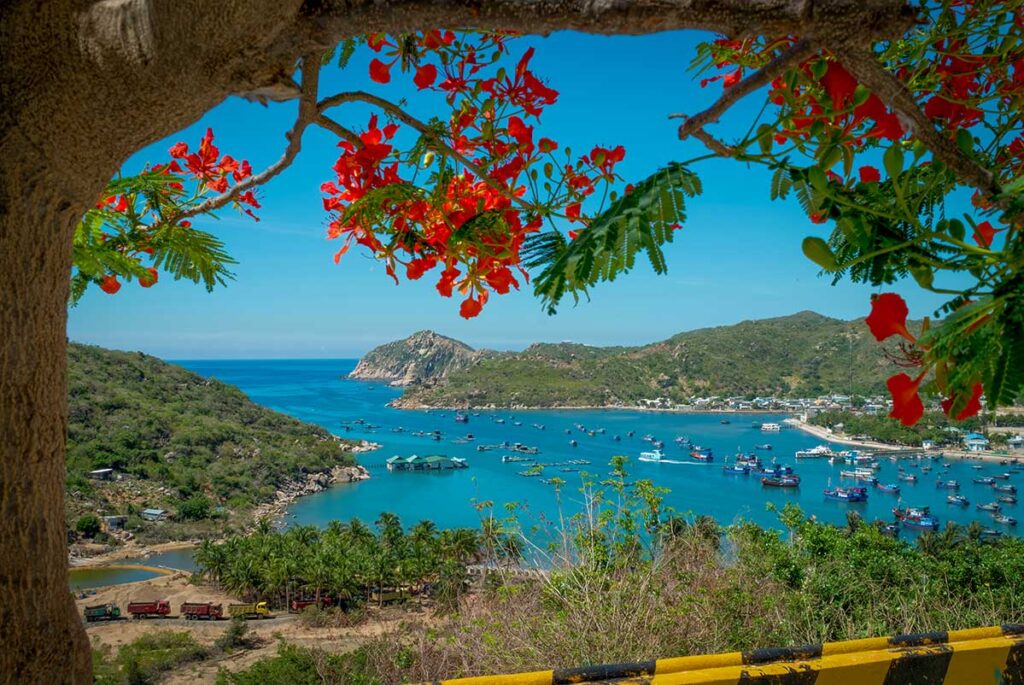
It’s worth allowing time to stop at roadside viewpoints, particularly the curves with views toward Binh Hung Island. Riders should be prepared for strong sun and wind exposure, so long sleeves or a light jacket can help. The road is safe to drive but has sharp bends, making it more enjoyable if you take it slowly and stop often for photos.
2. Boat trip around the bay & coves
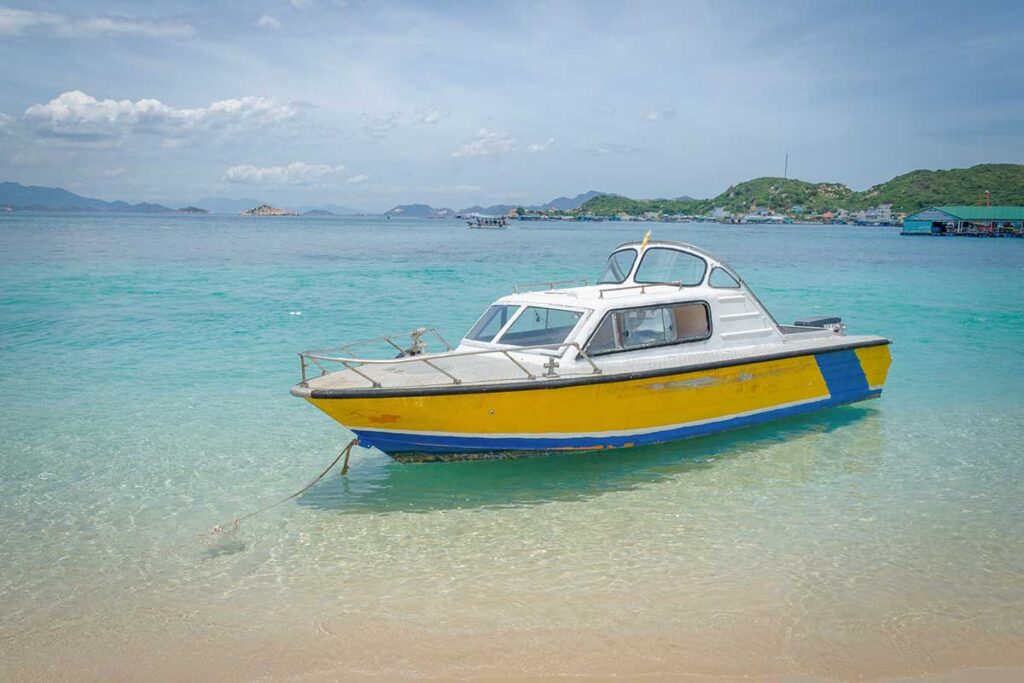
The main approach to Vinh Hy Bay is along road DT702, often described as one of the most scenic coastal drives in Vietnam. The road winds between the dry hills of Nui Chua National Park on one side and the blue ocean on the other, with plenty of curves and viewpoints to stop for photos. From several bends, you can look down over the bay filled with colorful fishing boats and a patchwork of floating farms — a sight that defines Vinh Hy more than sandy beaches.
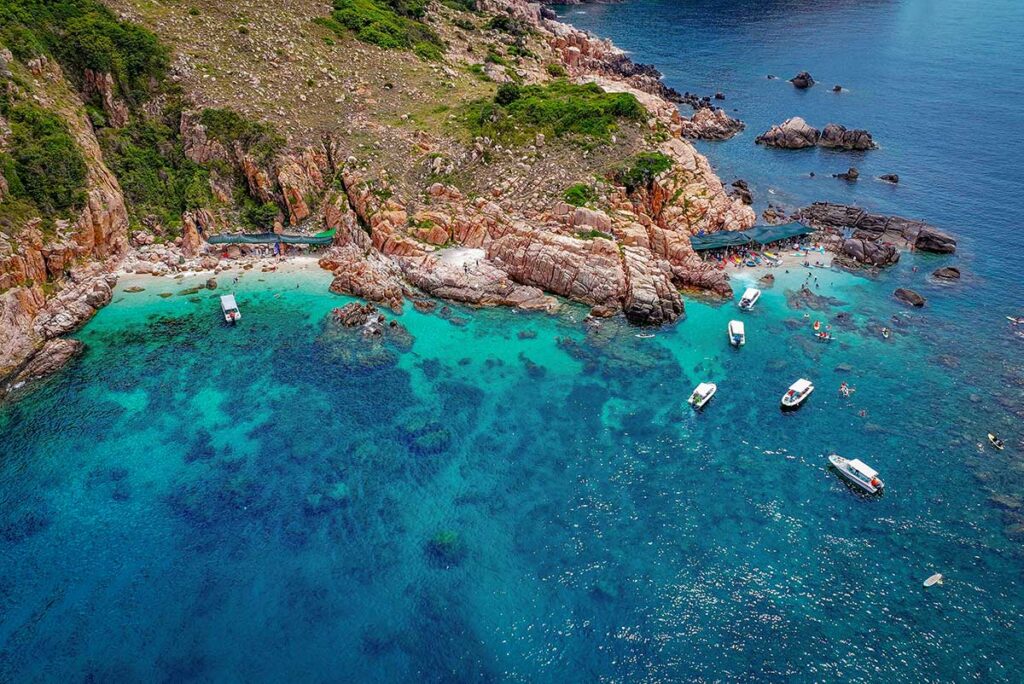
It’s worth allowing time to stop at roadside viewpoints, particularly the curves with views toward Binh Hung Island. Riders should be prepared for strong sun and wind exposure, so long sleeves or a light jacket can help. The road is safe to drive but has sharp bends, making it more enjoyable if you take it slowly and stop often for photos.
3. Beaches by boat (pocket coves)
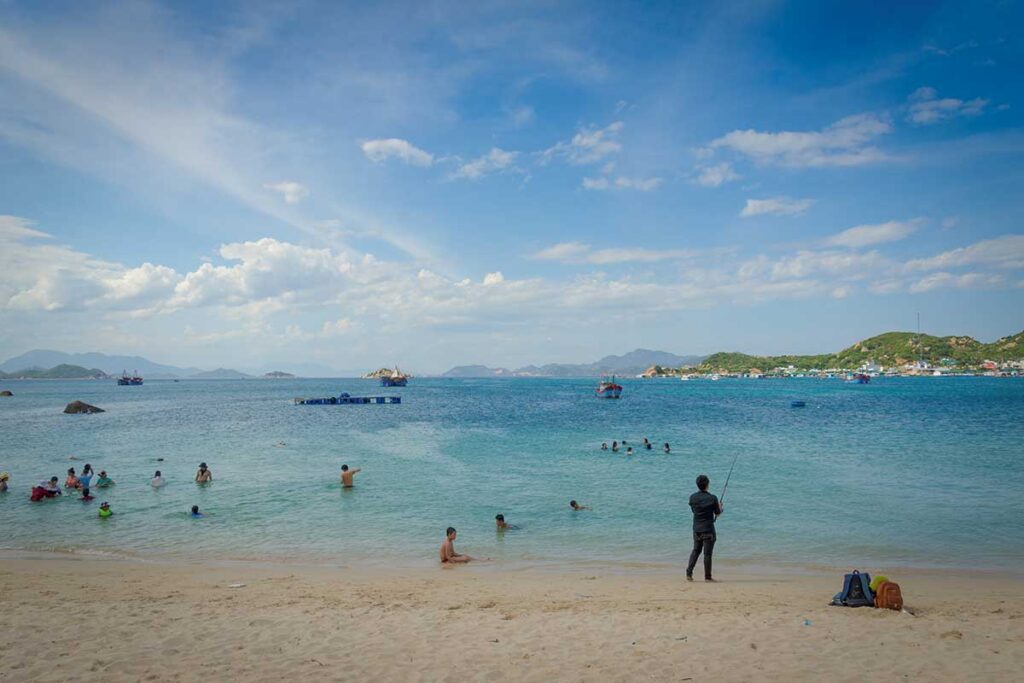
The nicest beaches around Vinh Hy are hidden in small coves that can only be reached by boat. These pockets of sand have turquoise water and a peaceful atmosphere, but they are undeveloped—no sunbeds, showers, or cafés.
To enjoy them, bring water, snacks, and a light towel, as there’s usually no shade or services. Some coves are sandy while others are partly rocky, so sandals or water shoes make swimming more comfortable. Cleanliness can vary depending on the tides, but on a quiet day you may have a whole beach almost to yourself.
4. Snorkeling & glass-bottom boats
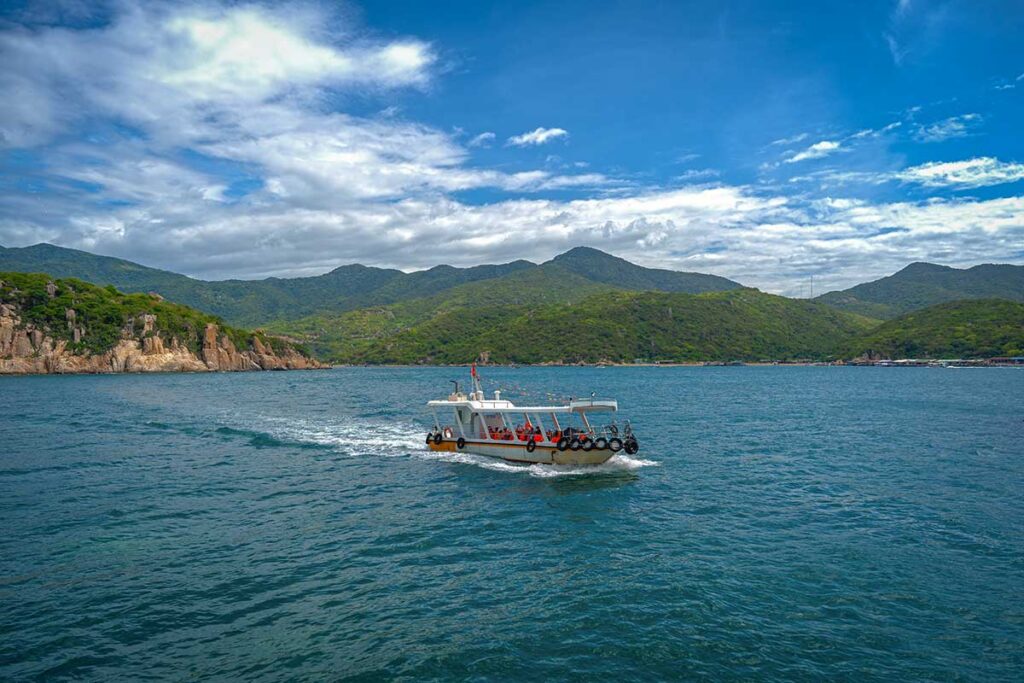
Snorkeling is often promoted as a highlight, though the reality is mixed. Some coral is still alive, but much has been damaged, and visibility is often greenish rather than crystal clear. Glass-bottom boats are another way to see the reef, though the marine life is modest compared to well-known dive spots. The real attraction is drifting close to the cliffs and coves.
If you want to snorkel, it’s better to bring your own mask for hygiene and comfort. Reef-safe sunscreen is recommended to avoid further coral damage. Jet skis sometimes operate close to snorkelers, so it’s worth being alert in the water. Think of this as a fun side activity rather than a world-class underwater experience.
5. Floating seafood rafts (lunch by boat)
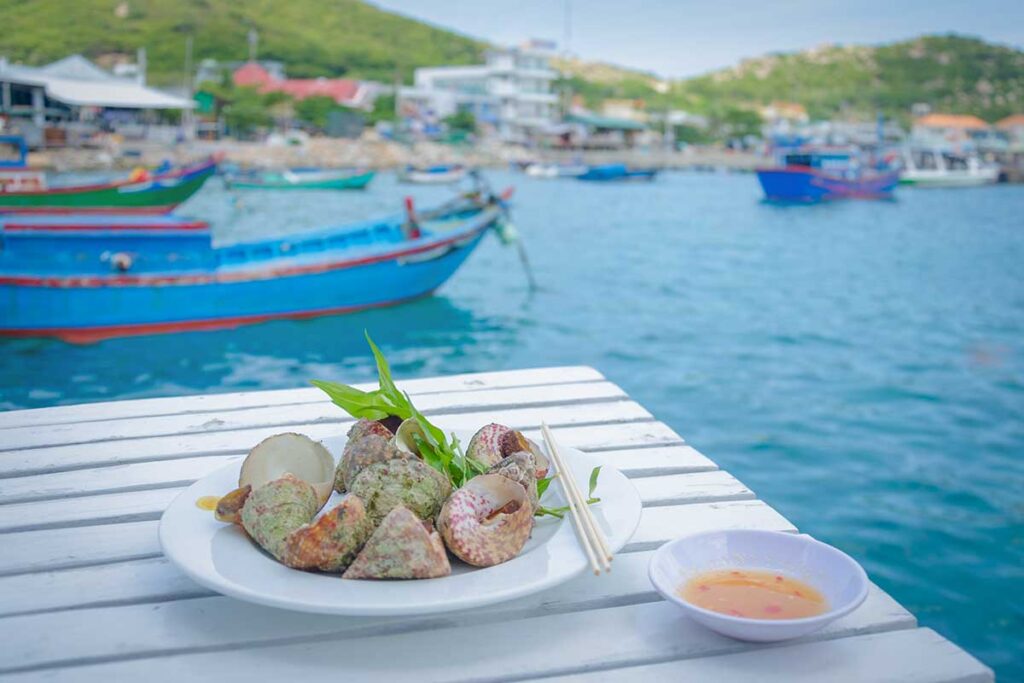
Many boat trips include a stop at the floating seafood restaurants in the bay. These wooden rafts sit on the water with tanks of live seafood—lobster, squid, clams, and fish—which are cooked on the spot after you choose. It’s a unique and very local experience, more about the setting than the comfort.
Food can be excellent, but prices are higher than in the village and communication is limited, so it’s best to confirm prices before ordering. English menus are rare, but pointing at the tanks works fine. Cash is required, and the ride to the rafts is normally included if you eat there. Despite the simplicity, sitting over the water with a fresh seafood meal is one of the more memorable things to do here.
6. Lo O Stream (Suoi Lo O)
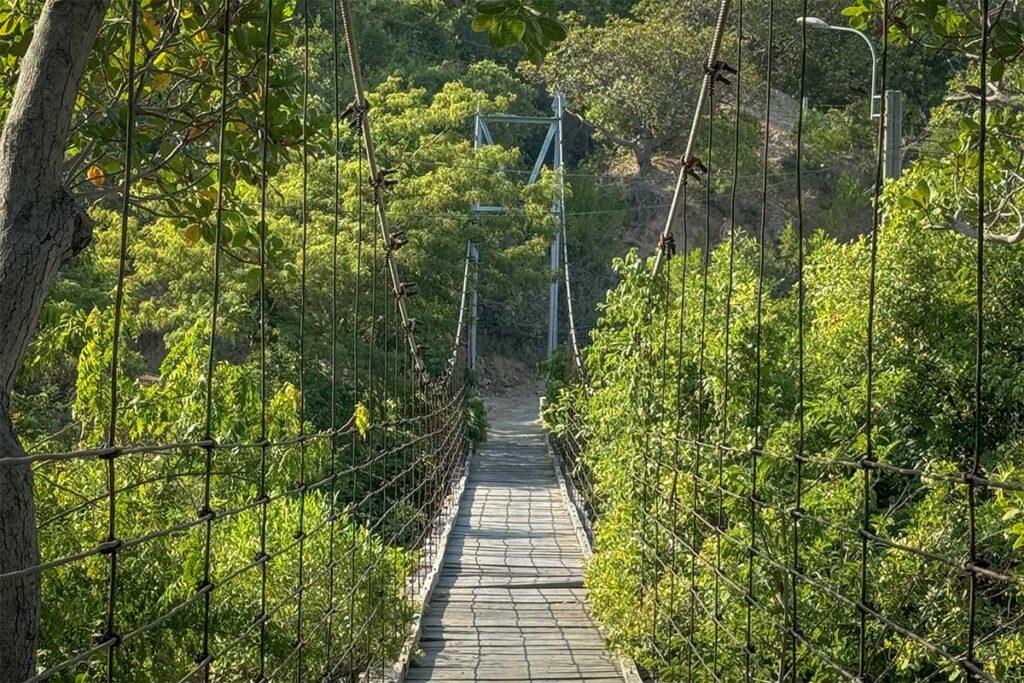
Just a kilometer from Vinh Hy Bay lies Lo O Stream, a small freshwater stream running through Nui Chua’s dry forest hills. It’s a cool spot to escape the coastal heat, with clear water flowing over rocks and shaded areas that feel refreshing after time in the sun.
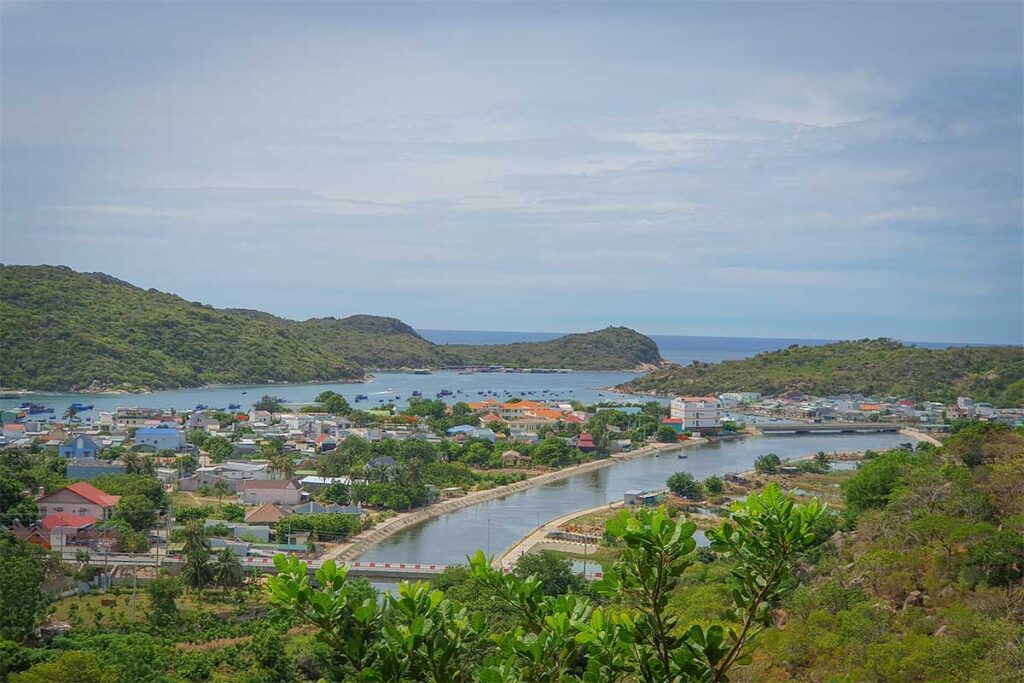
The stream is easy to reach by motorbike or car, and a short stop here can be combined with a boat trip or coastal drive. Rocks can be slippery, so sandals or sturdy shoes are useful. Flow is best during the warmer months; in the driest part of the year the stream can shrink, so it’s more of a quick stop than a main attraction.
7. Walk the fishing village
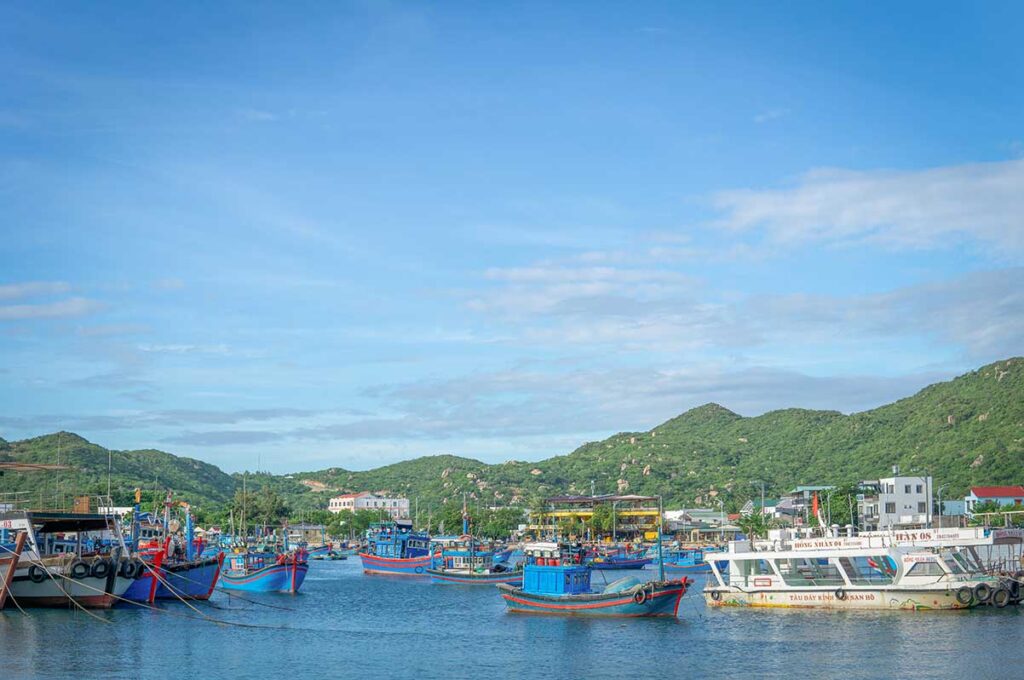
Vinh Hy is still a fishing village, and exploring it on foot gives a sense of everyday life. In the mornings, the harbor comes alive as fishermen bring in their catch, and the small market buzzes with activity. In the evenings, the waterfront is calm with boats moored side by side.
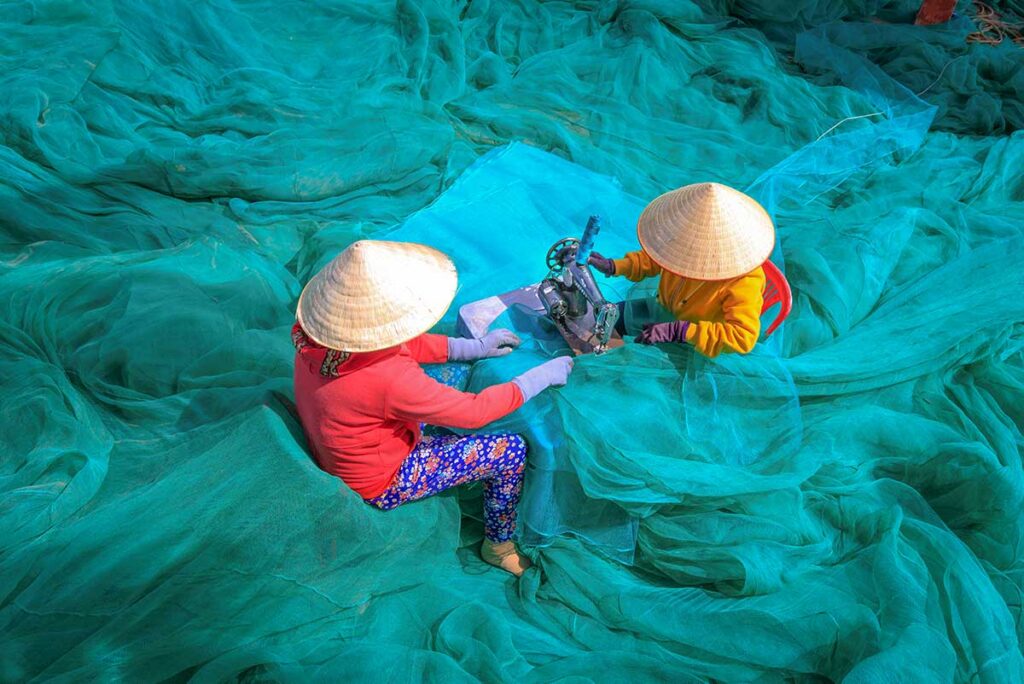
It’s not a polished tourist area, but it’s worth a stroll for photos and a look at local life. Shops and eateries are basic, with little English spoken, so don’t expect much beyond simple snacks and drinks. Still, this walk balances the coastal scenery with the rhythms of a real fishing community.
8. Nearby add-ons (short range)
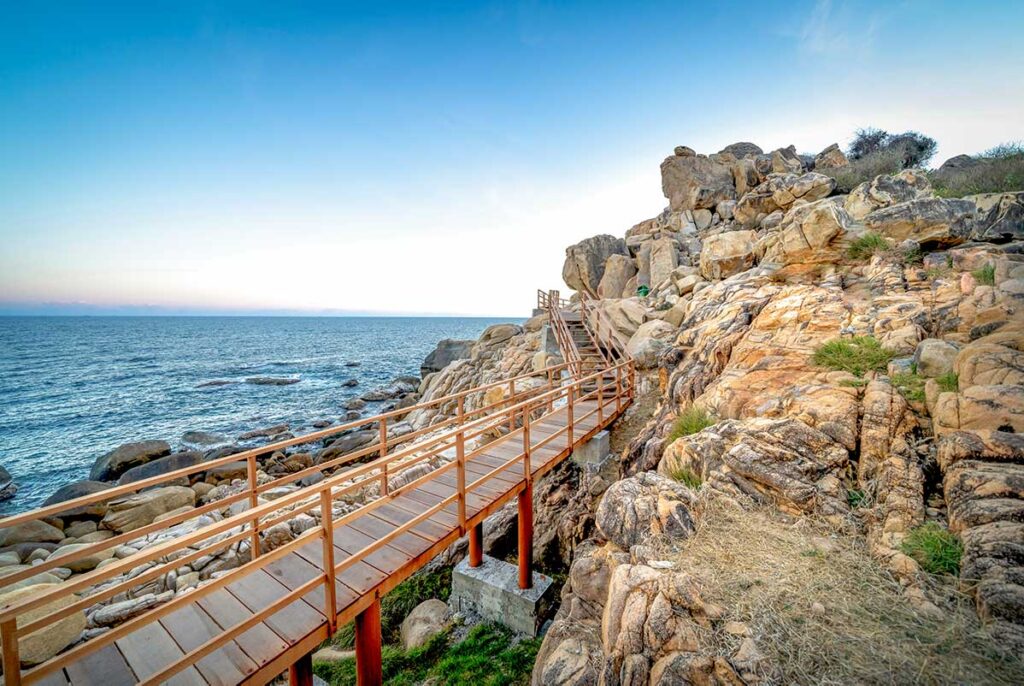
Several natural sights close to Vinh Hy are easy to combine with your visit. Hang Rai is a rocky shelf with unusual lava-like formations and tide pools that make for striking photos. Parts of Nui Chua are nicknamed the “rock park,” with dramatic weathered formations overlooking the sea. Lookout points on the coastal road also offer sweeping views toward Binh Hung Island.
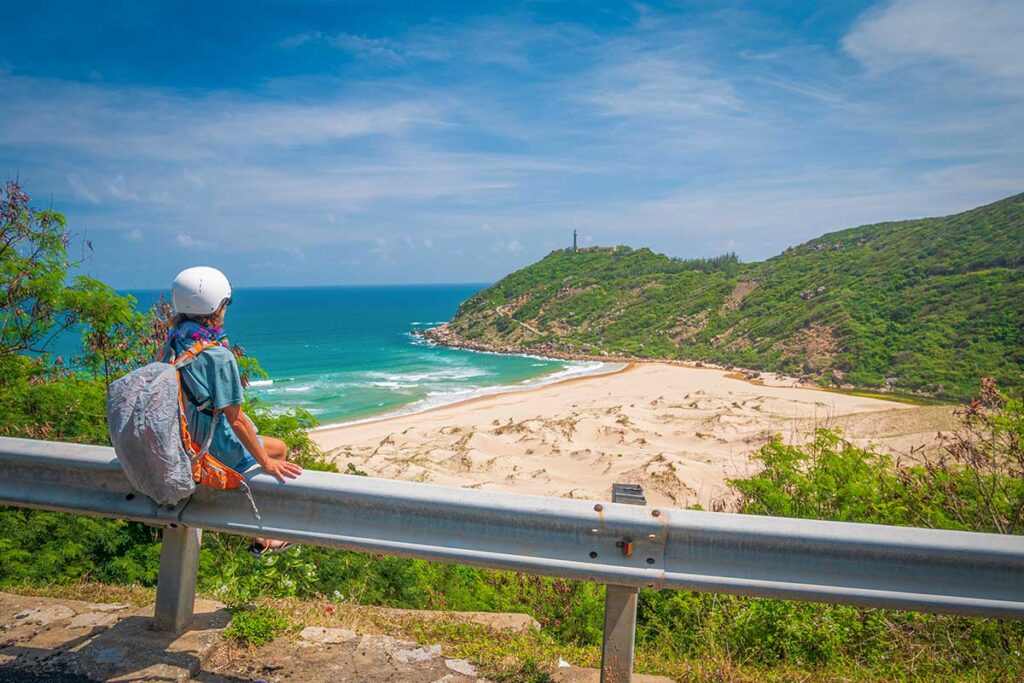
These stops are best included in a motorbike or car trip along DT702, making the journey itself as rewarding as the destination. Hang Rai has a small entrance fee and minimal facilities, so bring water and good shoes if you plan to walk on the uneven rocks.
9. Day trips & pairings (wider area)
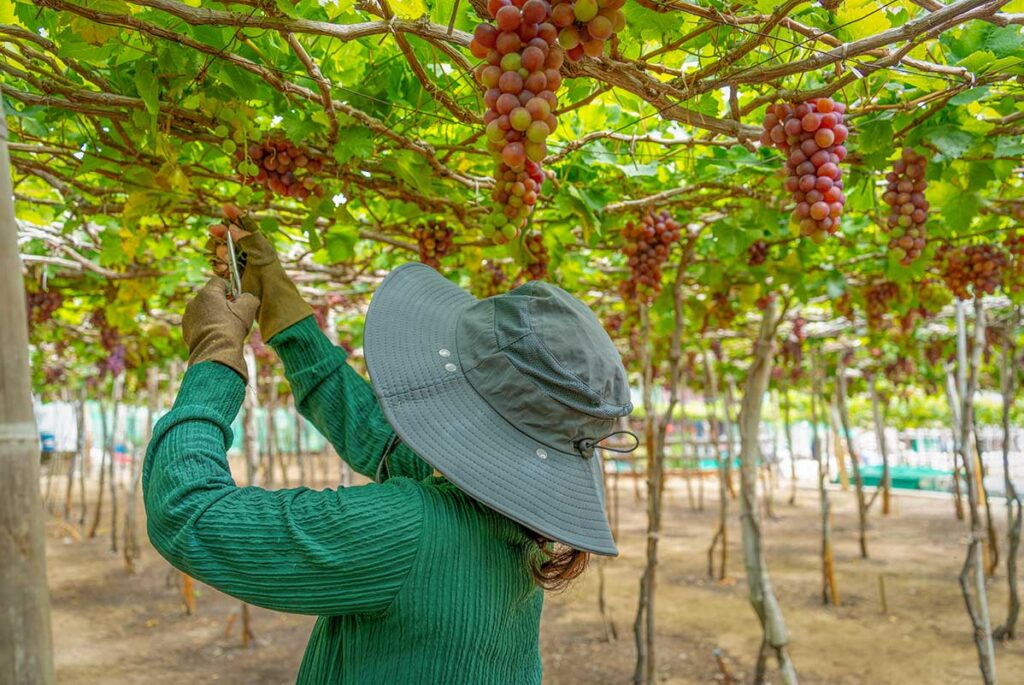
For many travelers, Vinh Hy Bay is not a stand-alone destination but part of a wider itinerary in Ninh Thuan. It pairs well with Phan Rang’s vineyards, Cham temples, and beaches, or with a quiet night at a resort on the coast. The coastal road north and south has more viewpoints and bays, making the journey a highlight in itself.
If you only have one day, a trip from Phan Rang by motorbike or private car is enough to see the bay, Hang Rai, and perhaps a cove by boat. Staying overnight gives more time to explore vineyards or remote corners of Nui Chua without rushing. Vinh Hy works best for those who enjoy mixing scenery and local culture, rather than those expecting polished beach resorts.
Best time to visit
The most reliable time to enjoy Vinh Hy Bay is in the summer months from May to August, when the sea is calm and boat trips usually run without problems. This is also when the water is clearest, making snorkeling and beach stops by boat more appealing.
Outside of summer, conditions are less predictable. From October to November, storms can bring rough seas and cancel trips, while the cooler months of December to February are often windy and choppy. If you do visit in these periods, early mornings tend to be calmer and are the best time to go out on the water.
That said, the coastal drive and fishing village can be visited year-round. No matter when you go, the sun is strong—bring a hat, sunscreen, and plenty of water even if you only plan a short walk or a ride along the DT702.
Location & Getting there
Where is Vinh Hy Bay?
Vinh Hy Bay is about 40 km northeast of Phan Rang–Thap Cham, reached via the DT702 coastal road that runs through Nui Chua National Park. The bay itself is small, with a fishing harbor at the village where boats depart for trips.
Best base city
Phan Rang–Thap Cham is the most practical base, with a range of hotels, restaurants, and transport connections. Travelers usually reach Phan Rang by train to Thap Cham station, long-distance buses, or by flying to Cam Ranh Airport, which is about two hours away by car. From Phan Rang, the road to Vinh Hy takes around one hour.
From Phan Rang by motorbike
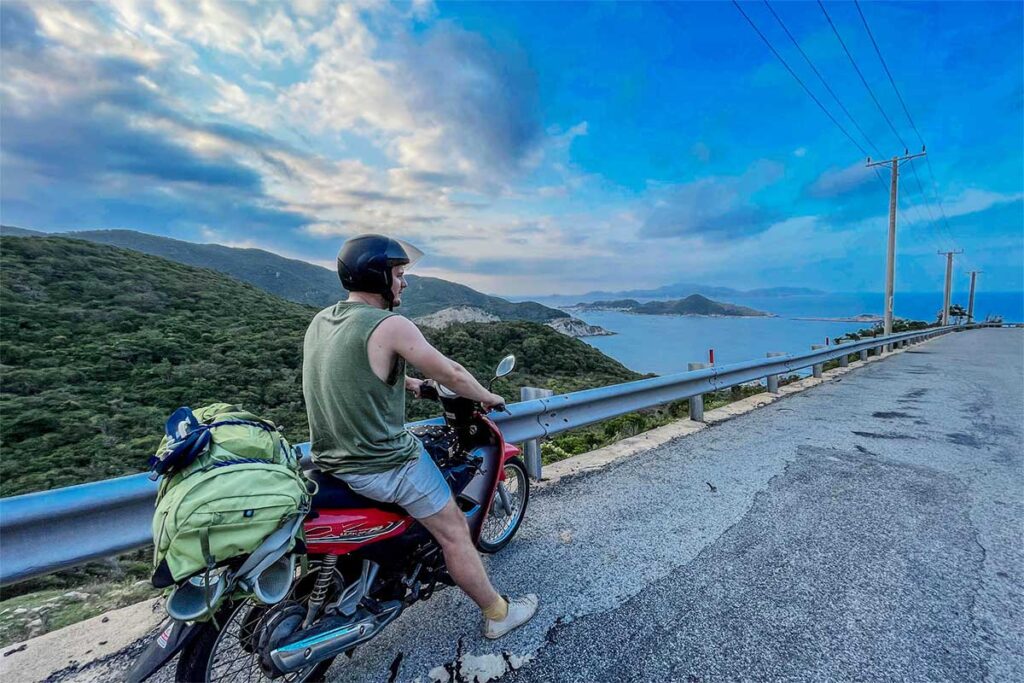
Riding a motorbike is the most flexible way to get to Vinh Hy. It’s cheap and allows plenty of photo stops along the scenic road, but comes with the usual risks. An international driving permit is officially required in Vietnam, and the route has sharp bends, strong sun, and wind. Fuel is available in Phan Rang before starting, and parking is possible in the village near the harbor.
Private car with driver
For families or travelers who prefer comfort, a private car with driver is the easiest option. Drivers can wait for you on a day trip or return later if you stay overnight. Costs vary depending on distance and waiting time, so it’s best to confirm in advance. This option also allows you to combine Vinh Hy with stops like Hang Rai or the vineyards without worrying about logistics.
From Cam Ranh/Nha Trang side
Vinh Hy can also be reached from Cam Ranh or Nha Trang, a drive of around two hours. This route is especially scenic, with viewpoints over Binh Hung Island along the way. It’s less common than coming from Phan Rang, but makes sense if you are traveling along the central coast.
On arrival
In Vinh Hy village, boats for sightseeing trips leave from the main harbor. Parking is available nearby for cars and motorbikes, but facilities are simple. English is rarely spoken, so arranging trips usually involves pointing, writing numbers, or using a translation app.
Where to stay in & around Vinh Hy Bay
In the village
Right in Vinh Hy village you’ll find basic homestays and a few small resorts. Rooms are simple, English is limited, and facilities can feel dated, but the location is convenient for walking to the harbor and market. Staying here puts you in the middle of the fishing village atmosphere, which can be charming if you don’t mind the lack of polish.
Coastal resorts outside the village
Along the coast, a short drive from the village, are more appealing places to stay. These range from mid-range boutique resorts such as Casa Maya, which offers sea views and a quieter setting, to the ultra-luxury Amanoi, one of the most exclusive resorts in Vietnam. These options give you better scenery and comfort, and they suit travelers who want the bay’s natural beauty without being in the village itself.
Phan Rang as a base
Phan Rang–Thap Cham remains the most practical base if you want variety. The city has a wider choice of hotels across all budgets, plus restaurants, ATMs, and transport connections. From here, Vinh Hy Bay works well as a day trip, especially if you prefer to return to more comfortable or international-standard hotels at night.
Practical visiting information & Travel tips
Language & service reality
English is rarely spoken in Vinh Hy, and most services are aimed at Vietnamese visitors. For boat trips or restaurant orders, be ready to use gestures, photos, a calculator, or a translation app. Patience helps a lot here.
Boats & safety
Boat rides are the main activity, and prices are usually set per boat rather than per person. Expect around 1,000,000 VND for a private boat for six to eight people, with shorter shared trips available for less. Life jackets are provided, though often basic, and the sea can be choppy, so mornings are best. If you get seasick easily, consider medication. Jet skis occasionally pass close to swimmers and snorkelers, so stay alert in the water.
Snorkeling expectations
Snorkeling is possible, but clarity and coral health vary. Some areas are colorful, others are damaged or murky, especially if the wind stirs up the water. Bring your own mask if you are sensitive about hygiene, and always use reef-safe sunscreen. Avoid stepping on coral or touching marine life.
Food & costs
Seafood is the highlight here, either at the floating rafts or in simple eateries in the village. Freshness is almost guaranteed, but prices vary and can be higher at the rafts. English menus are rare, so pointing works best. Cards are not accepted—bring cash and confirm prices before ordering.
What to bring
The essentials are sun protection (hat, sunscreen, sunglasses), plenty of water, and snacks if you plan to spend time on the boat or in the coves. A light towel, sandals for rocky beaches, and a dry bag for your phone and valuables will make the trip more comfortable. Always carry small cash for food and boat payments.
Connectivity & cash
Mobile signal can be patchy when you get away from the village. There are no reliable ATMs in Vinh Hy, so withdraw enough cash in Phan Rang before your visit.
Cleanliness & comfort
Not every beach around the bay is pristine. Some coves can have litter washed in by currents, and none have facilities like showers or umbrellas. Choose your beach carefully, and go with realistic expectations—it’s more about rugged nature than manicured sand.
Ethical & environmental notes
This is still a working fishing village, so respect local life. Minimize plastic waste, don’t disturb wildlife, and support small businesses by eating or staying locally. Leaving no trace helps keep the area attractive for both locals and visitors.
Weather fallback
If seas are too rough for a boat trip, there are still things to do. Drive the coastal road, visit Hang Rai’s rock formations, walk the village market in the morning, or stop at nearby vineyards. These activities are less weather-dependent and can make up for a canceled day on the water.
